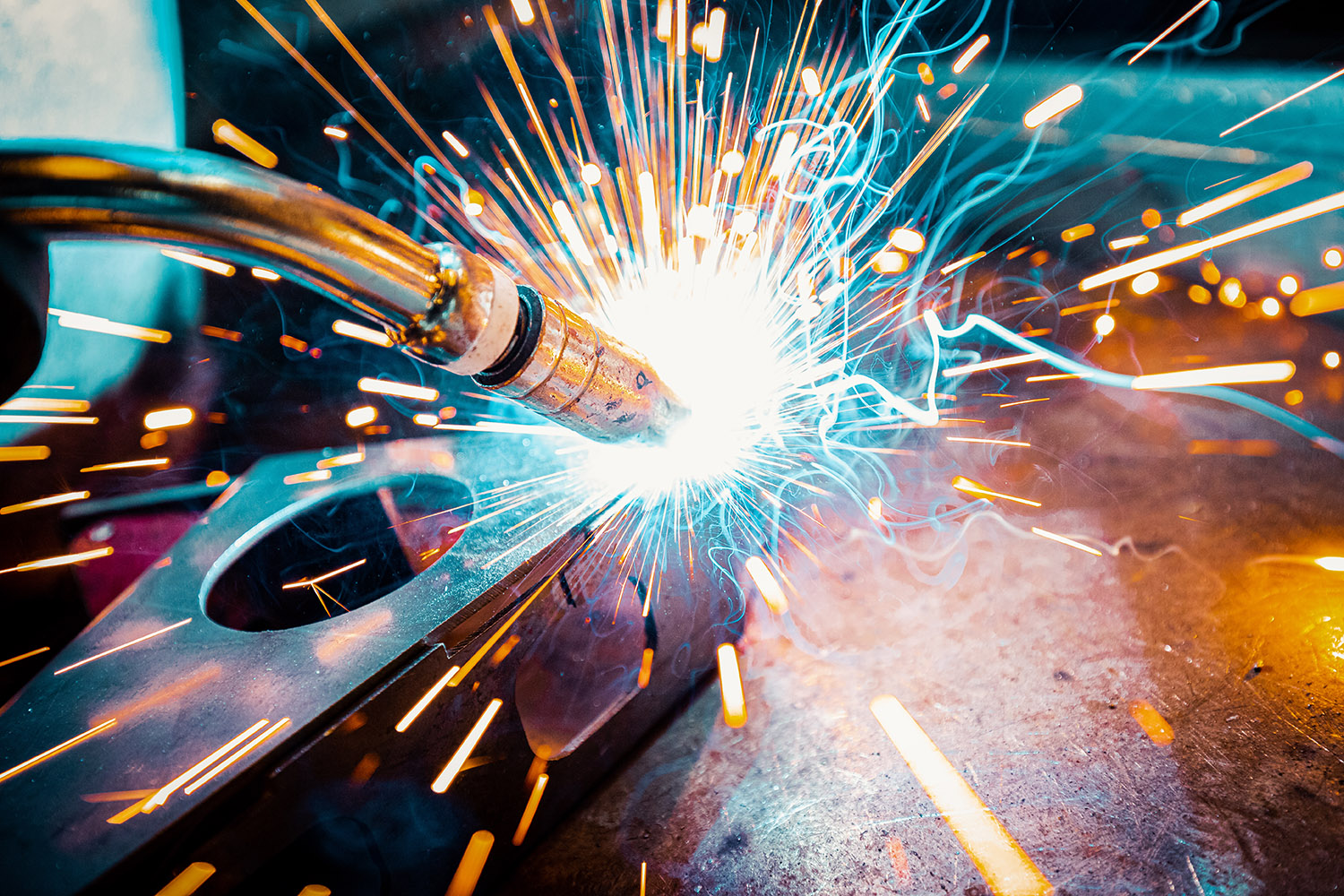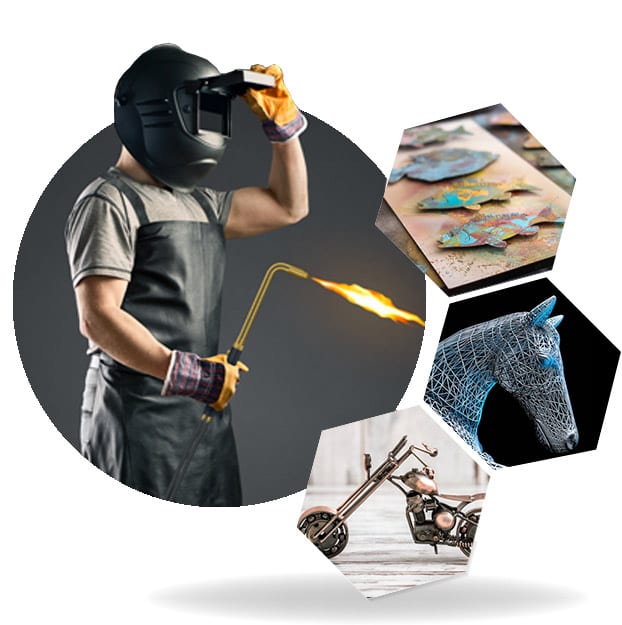Everything about Welding: Secret Insights Into Techniques and Finest Practices for Success
Welding includes a variety of techniques, each suited for details products and applications. Recognizing these approaches, such as GMAW, SMAW, and TIG, is crucial for achieving excellent results. The right equipment and safety practices can not be forgotten. As preparation and troubleshooting play critical duties in the welding process, grasping these elements can greatly boost the quality of the end product. What are the crucial aspects that assure a successful weld?
Comprehending Different Welding Methods
Welding methods encompass a selection of approaches, each suited to details applications and products. Among the most typical strategies are Gas Metal Arc Welding (GMAW), Protected Steel Arc Welding (SMAW), and Tungsten Inert Gas Welding (TIG) GMAW, additionally understood as MIG welding, is popular for its speed and convenience, making it suitable for thin products. SMAW, or stick welding, is favored for its simpleness and effectiveness in outside settings, especially with thicker metals. TIG welding offers accuracy and control, making it ideal for complex job and non-ferrous steels (Montana Mobile Welding and Repair Fabrication). Each technique has its special advantages and considerations, permitting welders to choose the most effective method based on the job's requirements, material kind, and desired results. Understanding these methods is vital for successful welding
Crucial Welding Devices and Tools
While numerous welding methods need details skills, the ideal tools and tools are similarly essential for accomplishing top quality results. Vital welding tools includes welding devices, which vary relying on the technique-- such as MIG, TIG, or stick welding. Protective equipment, including gloves, aprons, and helmets, assurances safety and security and comfort throughout the procedure. Furthermore, components and clamps assist safeguard materials in position, guaranteeing accuracy in welds. Consumables like welding poles, cable, and protecting gas are additionally essential elements that affect the quality of the weld. Devices such as cutters and grinders facilitate surface area prep work and post-weld finishing, contributing to a professional result. Buying high-grade equipment inevitably enhances the efficiency and performance of welding jobs.
Safety And Security Practices in Welding
Correct safety practices are essential in the welding market to protect workers from possible threats. Welders must use proper personal protective devices (PPE), consisting of headgears with correct shading, gloves, and flame-resistant clothing. Sufficient ventilation is important to decrease direct exposure to harmful fumes and gases generated during the welding procedure. In addition, workers must be learnt the appropriate handling of welding devices to stop crashes. Fire precaution, such as keeping combustible materials away from the welding location and having fire extinguishers easily offered, are necessary. Routine inspections of equipment and workspaces can assist identify prospective dangers prior to they result in mishaps. By adhering to these safety and security techniques, welders can develop a safer working atmosphere and minimize risks related to their trade.
Readying Materials for Welding
Preparing materials for welding is an essential step that significantly affects the high quality and honesty of the end product (Montana Mobile Welding and Repair Belgrade Welding). Correct prep work involves cleansing the surfaces to eliminate pollutants such as oil, corrosion, and dust, which can endanger the weld. Strategies such as grinding, fining sand, or making use of solvents are typically employed to attain a tidy surface. In addition, guaranteeing that the products fit with each other comfortably is important; gaps can cause weak welds. It's likewise important to take into account the positioning and positioning of the elements, as this will certainly influence the convenience of welding and the last result. Lastly, picking the proper filler product and guaranteeing compatibility with the base steels is crucial for achieving strong, resilient welds
Tips for Getting High-Quality Welds
Achieving premium welds requires attention to detail and adherence to ideal methods throughout the welding procedure. Correct joint prep work is crucial, guaranteeing surface areas are tidy and free from impurities. Selecting the ideal filler product and welding method based on the base metals is critical for optimal bonding. Maintaining constant traveling speed and angle while welding can promote and stop flaws uniformity. Furthermore, managing warmth input is important; excessive warmth can bring about bending and deteriorated joints. If required, consistently examining the welds throughout the procedure allows for instant modifications. Employing ideal post-weld treatments, such as cleaning and tension relief, can enhance the longevity and integrity of the weld, inevitably ensuring a successful result.
Troubleshooting Typical Welding Issues
Welding frequently presents obstacles that can affect the high quality and stability of the end product. Typical next issues such as porosity, irregular weld grains, and getting too hot can emerge, each calling for certain fixing methods. Comprehending these issues is important for welders to improve their skills and achieve excellent results.
Porosity Problems Clarified
Porosity can usually be overlooked, it remains a vital problem in welding that can endanger the stability of a completed item. Porosity describes the existence of little gas pockets within the weld grain, which can weaken the joint and lead to early failure. This trouble commonly develops from impurities, moisture, or incorrect protecting gas coverage during the welding process. To minimize porosity, welders ought to confirm that the base products are clean and dry, utilize proper securing gases, and keep consistent welding criteria. Consistently inspecting the tools and setting can additionally aid recognize possible issues before they manifest in the weld. Addressing porosity successfully is vital for attaining solid, sturdy welds that fulfill quality requirements.

Irregular Weld Beads
Inconsistent weld grains can considerably affect the quality and stamina of an ended up item. Numerous variables add to this concern, consisting of incorrect traveling rate, incorrect amperage setups, and irregular electrode angles. When the welder moves as well swiftly, a bead might show up narrow and lack infiltration, while moving too gradually can trigger extreme build-up. Furthermore, utilizing the wrong amperage can result in either damaging or excessive spatter, both of which concession weld integrity. The welder's method, such as inconsistent torch activity, can likewise cause irregular bead look. To reduce these problems, welders must concentrate on maintaining stable, regulated activities and making certain proper devices settings to accomplish uniformity in their welds. Uniformity have a peek here is essential to achieving reputable and strong welds.
Overheating and Warping Issues
Too much warm during the welding process can result in significant getting too hot and deforming problems, impacting the structural honesty of the workpiece. These problems frequently manifest as distortion, which can compromise positioning and fit-up, making additional setting up testing. Factors adding to overheating consist of the selection of welding criteria, such as voltage and travel speed, in addition to the kind of product being welded. To mitigate these problems, welders need to maintain consistent traveling speed and proper warmth input while checking the workpiece temperature. Furthermore, pre-heating or post-weld warmth treatment can help reduce stresses caused by quick air conditioning - Fabrication. Routine evaluation and adherence to finest practices are crucial in avoiding overheating and guaranteeing the long life and dependability of bonded frameworks
Often Asked Concerns
What Are the Job Opportunities in the Welding Sector?
The welding sector provides varied career chances, including positions as welders, inspectors, designers, and instructors. Specialists can function in manufacturing, building, aerospace, and vehicle markets, gaining from solid demand and affordable wages in various functions.
Exactly How Can I Boost My Welding Rate Without Compromising Top Quality?
To enhance welding speed without compromising high quality, one should exercise reliable techniques, maintain devices, enhance settings, and enhance hand-eye sychronisation. Regular training and looking for feedback can additionally greatly add to accomplishing much faster, high-grade welds.
What Qualifications Are Available for Welders?
Numerous certifications exist for welders, including those from the American Welding Society (AWS), the National Center for Construction Education and Research (NCCER), and various industry-specific organizations. These qualifications improve employability and show skill effectiveness.
Exactly How Does Welding Affect the Qualities of Metals?
Welding affects the homes of metals by altering their microstructure, which can lead to adjustments in solidity, ductility, and toughness. Heat input and cooling prices throughout the procedure substantially impact these material qualities.
Can I Weld Dissimilar Metals Together?
